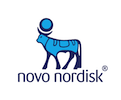The Need for Healthy Goals
Charlotte Ersbøll, Ccorporate Vice President in Novo Nordisk, reflects on the post-2015 agenda, why health must remain at the heart of sustainable development and how Novo Nordisk can make a difference.
At the turn of the millennium, world leaders entered into a commitment to reach eight goals by 2015. They were launched as the Millennium Development Goals, or MDGs as they are most often referred to. In the 15 years since the launch, millions of lives have felt a positive difference in their income, health and education1.
One of the key drivers of these achievements was the recognition that improving the lives of the world’s poorest was a shared responsibility. There was no room for individuals, nations or companies to view global development as being ‘someone else’s problem’. A failure to make progress on the eight goals was not just detrimental to the human life, but to the growth and health of our economies, societies and businesses.
We are now at the next step, the post-2015 agenda, with a chance to build on the successes from the past 15 years and address the challenges, both new and unresolved, through a new set of 17 goals – the Sustainable Development Goals (SDGs).
I am looking forward to seeing UN member states, the global business community and civil society organisations convene around this new set of universal goals. I only hope we all remember to put health front and centre. Let me elaborate on why this is so critical.
Health at the heart of sustainable development
In Novo Nordisk, we believe health, particularly defeating non-communicable diseases (NCDs), must remain at the heart of the post-2015 development framework. These diseases, including diabetes, cancers, cardiovascular diseases and hypertension, account for almost half of low- and middle-income country deaths and disabilities worldwide but receive less than 1% of total development health assistance2.
Since 2000, many donors have targeted funding on the health priorities contained within the MDGs despite the fact that NCDs cause 36 million annual deaths. Low- and middle-income countries already suffer 86% of the burden of these premature deaths, potentially resulting in cumulative economic losses of USD 7 trillion over the next 15 years and leaving millions of people trapped in poverty3.
NCDs are having a devastating toll on human life, and like malaria and HIV/AIDS, which achieved amazing success under the MDGs, NCDs are also our shared responsibility.
Throughout the process, Novo Nordisk has been advocating for the inclusion of a target to reduce NCDs in the new set of development goals. We are pleased to see that goal 3 is exclusively focused on health and thrilled that one of the goal’s targets aims to reduce the mortality rate from the four major NCDs, including diabetes, with one third by 2030. As a global healthcare company, we have both a responsibility and a business rationale to drive this agenda, and the need has never been greater in both the developing and developed world.
Identify opportunities, collaborate for success
Prevention efforts, and ensuring timely and quality treatment to avoid complications, are paramount to reducing the NCD mortality rate. It will take universal availability and access to affordable essential medicines, healthcare services and medical technology.
But the opportunities to do even more to fight NCDs spring up in many of the new goals. Although only one of the 17 proposed goals is directly focused on health, health is inextricably linked to the others. In this issue of TBL Quarterly, we show examples of where and how NCDs, like diabetes, fit into the bigger picture. This includes stories from improving maternal health to how we can create more sustainable cities.
The new SDGs are an exciting next step in the global development journey. As a company committed to improving the lives of people living with diabetes, the 17 goals provide a comprehensive and universally accepted framework to account for our progress on performance. As a business supplying nearly half the world’s insulin, the focus and alignment of UN member states, national and local governments, NGOs and the private sector will help us all to find solutions that create shared value.
I am optimistic that 15 years from now, we will have even more stories of how individual and global health is fit for the future.
Charlotte Ersbøll
Corporate Vice President
Corporate Stakeholder Engagement, Novo Nordisk
Read the full issue of Novo Nordisk's sustainability magazine, TBL Quarterly, here.
----
1 Millennium Development Goals Progress Report 2015. Available at: http://www.un.org/millenniumgoals/
2 Financing Global Health 2013, Transition in an Age of Austerity’, Institute for Health Metrics and Evaluation, University of Washington, 2014. Available at: https://www.healthdata.org/sites/default/files/files/policy_report/2014/FGH2013/IHME_FGH2013_Full_Report.pdf
3 WHO Global NCD Action Plan 2013-2020 available at: http://www.who.int/nmh/events/ncd_action_plan/en/



